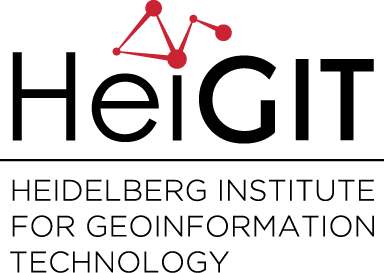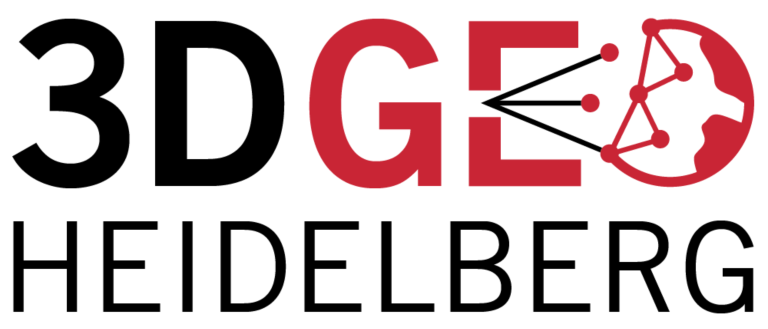Category: Research
-
Deriving indicators for Points of Interest and analyzing mixed activities in urban areas
We are pleased that our research paper “Deriving indicators for Points of Interest and analyzing mixed activities in urban areas” (Ullah, Lautenbach, Zipf 2021) has been accepted at the 12th International Symposium on the Digital Earth (ISDE) scheduled within the GI Week 2021 in Salzburg. The conference will take place from July 5th to July…
-
All countries of South and Southeast Asia now on Open Healthcare Access Map
It’s been a little longer than a month since we published the Open Healthcare Access Map. Last week we rolled out all countries of Sub-Saharan Africa. Today all countries of South and Southeast Asia follow. The web application is available here: https://apps.heigit.org/healthcare_access/. To get a clearer understanding of healthcare infrastructure data in OpenStreetMap, please consult…
-
UndercoverEisAgenten – “UndercoverEisAgenten” – Enabling Citizen Scientists to Monitor Permafrost Degradation
(English version below) Die Folgen des Klimawandels sind besonders stark in den höheren Breiten unseres Planeten zu spüren. Die Arktis erwärmt sich derzeit überdurchschnittlich schnell. Dies führt zum Auftauen von Permafrost (dauerhaft gefrorenen Böden) mit ernsthaften Konsequenzen für das arktische Ökosystem. Etwa ein Viertel der Landfläche in der Nördlichen Hemisphäre ist durch Permafrost gekennzeichnet. Darin…
-
LOKI at vEGU 2021 on 26 and 29 April
Join us and many European researchers from the Earth, planetary and space sciences in the virtual European Geosciences Union (EGU) assembly from 19 to 30 April 2021! Are you interested in innovative methods and concepts applied to natural hazards? Then join our 2-minute talks on research within the LOKI project on Monday, 26 April, and…
-
SYSSIFOSS at EGU21 on 26 April
From 19 to 30 April 2021, European researchers from the Earth, planetary and space sciences are gathering in the virtual European Geosciences Union (EGU) assembly. On Monday, 26 April, two SYSSIFOSS presentations will be opening the block “Point clouds for forestry applications” in session BG11 – Remote sensing for forest applications. Dr. Fabian E. Fassnacht…
-
All countries of Sub-Saharan Africa now in Open Healthcare Access Map
Last month we started the Open Healthcare Access Map. Initially, only a few countries were featured. Gradually, more countries and regions are now being added. Today we release all countries of Sub-Saharan Africa. The web application is available here: https://apps.heigit.org/healthcare_access/. Please note that this is still a prototype and feedback on improvements and desired functionalities…
-
Mapping Public Urban Green Spaces Based on OpenStreetMap and Sentinel-2 Imagery Using Belief Functions
Public urban green spaces are important for the urban quality of life. Still, comprehensive open data sets on urban green spaces are not available for most cities. As open and globally available data sets, the potential of Sentinel-2 satellite imagery and OpenStreetMap (OSM) data for urban green space mapping is high but limited due to…
-
Two-part Mapathons for better new user retention?
The project “25 Mapathons“ goes into the next phase. Based on the experience of until today 17 OSM mapathons with German Red Cross (GRC) chapter and an extensive literature review on the success of mapathons, the “25 Mapathons” team has identified several points of possible improvement in the way how mapathons are conducted in general:…
-
Towards a framework for the analysis of local OSM contributions
Volunteered Geographic Information (VGI) such as OpenStreetMap (OSM) is often defined as the collaborative acquisition of geographic information and local knowledge by volunteers, amateurs or professionals (Goodchild, 2007). The increasing availability and importance of local data in OSM is largely acknowledged in VGI projects. Local knowledge provides access to a plethora of contextual information and…
-
HELIOS++ v1.0.6 released
We are proud to present the newest HELIOS++ release, v1.0.6, with numerous bugfixes and support for the unique LiVOX scan pattern (using Risley prisms – the color indicates point indices and increases from blue to red): Furthermore, the Easter bunny left some Easter eggs in the ‘toyblocks’ scene: You can find the changlelog for the…
-
HeiGIT und DRK veröffentlichen weiteres Trainingsmaterial zu Mapathons
Gemeinsam mit dem Deutschen Roten Kreuz (DRK) hat das HeiGIT heute das Dokument “Die häufigsten Fehler beim „mappen“ mit dem iD-Editor & deren Lösung” veröffentlicht. Das Dokument ist komplementär zum Handbuch zur Veranstaltung von Mapathons, welches bereits 2020 veröffentlicht wurde. Das neue Dokument beschreibt kurz und bündig häufig auftretende Fehler beim Mappen und soll so noch unerfahrenen Mapper*innen…


